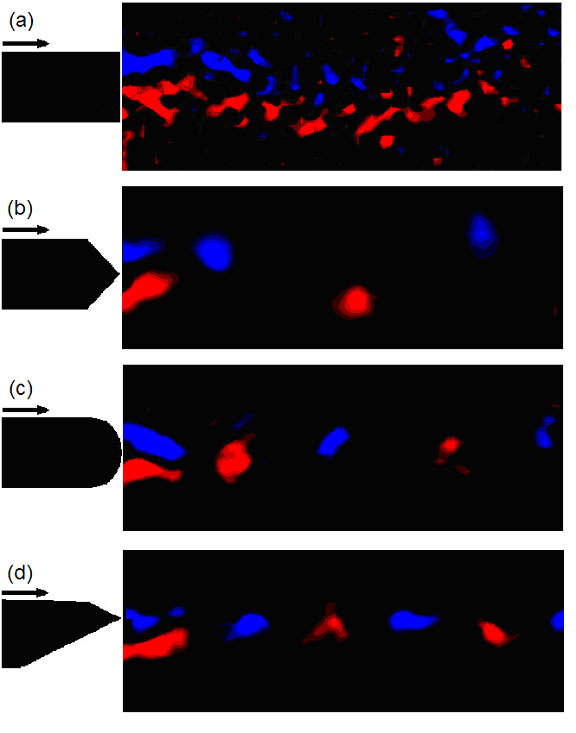Effects of Geometry on the Flow Around Elongated Cylinders

Deck geometry is one of the crucial factors that
influence the flow characteristics and aeroelastic response of long-span
bridges. The wake flow patterns of bridge sections become increasingly
important when exploring the interaction between the wind and the
structure, as designs are becoming longer and lighter. Since the flow
field and the vortex shedding activity produced by simple wind-structure
interaction are often complex in nature, the ambiguous effects of bridge
deck geometry cause the level of complexity to increase significantly.
The effects of deck geometry on the wake structure and shedding activity
have yet to be established, causing such study to be considered as a
necessary addition to further research within the field of bridge
aerodynamics.
Particle Image Velocimetry tests involving flow around elongated
cylinders, of various geometries, have been carried out in a 0.5m x 0.5m
x 2m open channel wind tunnel at the Boundary Layer Wind Tunnel
Laboratory at The University of Western Ontario. The purpose of each
test is to measure the wake structure resulting from the specific bluff
body geometry, as well as the flow field exhibited at the trailing edge.
The cylinders tested have an elongation ratio of 7 and are symmetric in
cross-section with leading and trailing edges of distinct rectangular,
triangular and circular geometry. The cross-section of the fourth
cylinder is one which resembles the design of the existing Storebælt
Bridge, found in Denmark, which experienced significant vortex-induced
response just prior to opening and the subsequent installation of
turning vanes. The overall objective of the present study is to provide
a quantitative interpretation of the wake topology characterized by the
existence of a geometry-dependent vortex street. A phase-averaging
technique to identify the turbulent structure in the near wake was
applied here to characterize the organized coherent concentrations of
large scale vorticity, unique to the body from which they are shed.
Vortex street comparisons amongst the bodies are accomplished on the
basis of the mean vortex spacing ratios, convection speeds and
circulation strengths.
At comparable convection speeds of approximately 85% of the freestream
flow, visual differences in the vortex spacing, size and strengths
amongst the wake flows are apparent. More specifically, it is the
triangular edge model which sheds a vortex street with the largest
spacing ratio; the circular edge model which produces the smallest
vortices in the wake; and the Storebælt model which experiences
differences in the strengths of the vortices shed from the top and
bottom separated shear layers. However, the PIV measurements suggest
that the bluff rectangular edge geometry generates a relatively
disorganized wake, where no periodic shedding is found; at least for
this particular elongation ratio. Upon reviewing these results, an
additional study involving the Reynolds Stress distributions produced in
the wakes of the four cylinder geometries is ongoing to investigate the
relationship that exists between the presence of a vortex street and its
influence on surrounding turbulent activity. The full conference paper
will focus on the distinct features of the resulting trailing edge and
wake flows due to the variations in model geometry, as well as their
effects on the aerodynamic behavior of such models
The research is performed by Emanuela Palombi as part of her graduate work in collaboration with Prof. Kopp from the Department of Civil Engineering in UWO.
Also from this web page:
Contact Info
Western Engineering
Spencer Engineering Building,
Room number 3035A
Telephone: (519) 661-2111 ext. 80174
Fax: (519) 661-3808
email: rgurka@eng.uwo.ca


